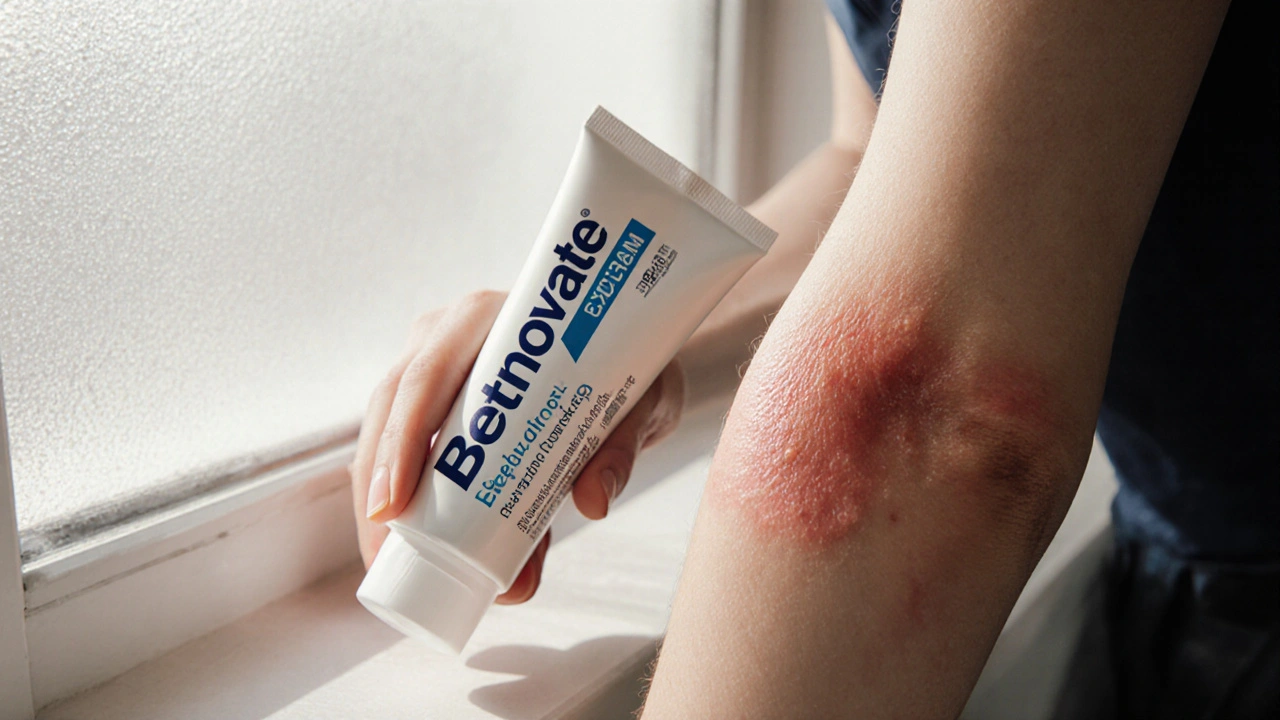Corticosteroid Cream Comparison – Find the Best Topical Steroid for Your Skin
When working with corticosteroid cream comparison, a side‑by‑side look at prescription‑strength steroid ointments applied to the skin. Also known as topical steroid analysis, it helps clinicians and patients pick the right cream for their condition. In everyday practice, the choice isn’t random – it follows a few simple rules. First, you consider the topical steroid potency, which ranges from low‑grade hydrocortisone (over‑the‑counter) to high‑grade clobetasol (prescription only). The potency determines how fast inflammation goes down, but it also raises the chance of skin thinning if you misuse it. Second, you look at the condition you’re treating. For instance, eczema, a chronic itchy rash, often responds well to medium‑strength creams like triamcinolone, while psoriasis may need a stronger option such as betamethasone dipropionate. Finally, you weigh the treatment duration and the patient’s age – kids and thin‑skinned areas need gentler formulas. These three factors – potency, condition, and safety profile – form the core semantic triple: corticosteroid cream comparison encompasses potency categories, condition‑specific needs, and safety considerations.
Key Factors That Shape a Smart Corticosteroid Cream Choice
Understanding the link between potency and skin condition is crucial. Low‑potency creams (<5% hydrocortisone) work best for delicate zones like the face or for short flare‑ups of eczema. Medium‑potency options (0.1% triamcinolone, 0.05% betamethasone) are the go‑to for moderate psoriasis plaques or for adult eczema that covers larger areas. High‑potency creams (0.05% clobetasol propionate) are reserved for severe, stubborn psoriasis or for thick‑skinned regions such as elbows and knees. The corticosteroid cream comparison guide shows that using a stronger cream than needed can cause telangiectasia, striae, or even systemic absorption, especially on broken skin. Conversely, under‑treating a flare can prolong discomfort and lead to secondary infection.
Another layer of decision‑making involves treatment protocols recommended by dermatology societies. Most guidelines suggest a “step‑wise” approach: start low, evaluate after one to two weeks, then step up if the response is inadequate. This step‑wise method requires proper prescribing and aligns with safety monitoring, creating the semantic triple: topical steroid potency influences treatment protocol, which in turn dictates safety monitoring. For children, the rule tightens – only low‑ to medium‑potency preparations are typically allowed, and the duration rarely exceeds two weeks without a doctor’s review.
Side‑effects are another piece of the puzzle, and they differ by potency and area of use. Common issues include burning, itching, or a temporary worsening of redness called “steroid‑induced flare.” With high‑potency steroids, you might see skin atrophy – a thinning that looks like fine lines or stretch marks. Systemic effects, though rare, can happen if you cover more than 10% of body surface area with a strong cream for a prolonged period. The comparison chart often flags these risks side‑by‑side with each cream’s strength, making it easy to spot which product suits a given scenario.
Finally, patient preference and lifestyle matter. Some creams are greasy, some absorb quickly, and the vehicle (ointment vs lotion vs gel) can affect adherence. For oily skin, a lotion or gel base feels lighter, while dry, scaly patches benefit from an ointment that traps moisture. This practical angle connects formulation type with real‑world use, forming the semantic triple: formulation type influences patient adherence, which impacts treatment effectiveness. By weighing these factors – potency, condition, safety, protocol, and formulation – the corticosteroid cream comparison becomes a reliable tool for anyone looking to treat skin inflammation responsibly.
Below you’ll find a curated set of articles that break down specific steroid creams, compare them head‑to‑head, and offer clear takeaways on when to reach for hydrocortisone, when to step up to clobetasol, and everything in between. Use this guide to match the right cream to your skin’s needs and avoid common pitfalls.

Betnovate (Betamethasone) vs. Common Topical Alternatives: A Practical Comparison
A clear, side‑by‑side comparison of Betnovate (betamethasone) with common steroid and non‑steroid alternatives, covering uses, risks, and how to choose.